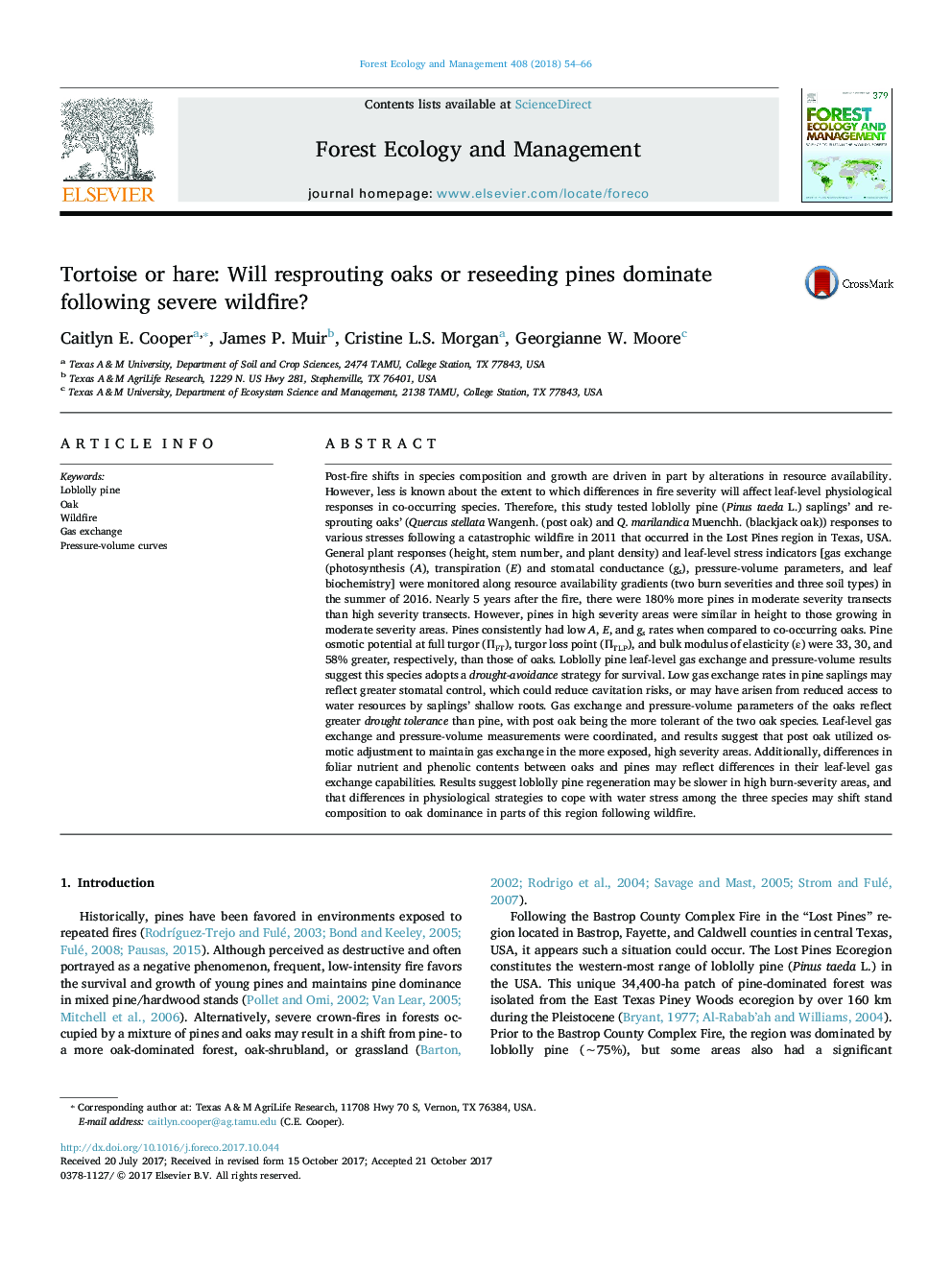| کد مقاله | کد نشریه | سال انتشار | مقاله انگلیسی | نسخه تمام متن |
|---|---|---|---|---|
| 6541899 | 1421350 | 2018 | 13 صفحه PDF | دانلود رایگان |
عنوان انگلیسی مقاله ISI
Tortoise or hare: Will resprouting oaks or reseeding pines dominate following severe wildfire?
ترجمه فارسی عنوان
لاک پشت یا خرگوش: آیا بلوط ها را تسخیر می کنند و یا جوانه زدن درختان کاشته می شود؟
دانلود مقاله + سفارش ترجمه
دانلود مقاله ISI انگلیسی
رایگان برای ایرانیان
کلمات کلیدی
موضوعات مرتبط
علوم زیستی و بیوفناوری
علوم کشاورزی و بیولوژیک
بوم شناسی، تکامل، رفتار و سامانه شناسی
چکیده انگلیسی
Post-fire shifts in species composition and growth are driven in part by alterations in resource availability. However, less is known about the extent to which differences in fire severity will affect leaf-level physiological responses in co-occurring species. Therefore, this study tested loblolly pine (Pinus taeda L.) saplings' and resprouting oaks' (Quercus stellata Wangenh. (post oak) and Q. marilandica Muenchh. (blackjack oak)) responses to various stresses following a catastrophic wildfire in 2011 that occurred in the Lost Pines region in Texas, USA. General plant responses (height, stem number, and plant density) and leaf-level stress indicators [gas exchange (photosynthesis (A), transpiration (E) and stomatal conductance (gs), pressure-volume parameters, and leaf biochemistry] were monitored along resource availability gradients (two burn severities and three soil types) in the summer of 2016. Nearly 5 years after the fire, there were 180% more pines in moderate severity transects than high severity transects. However, pines in high severity areas were similar in height to those growing in moderate severity areas. Pines consistently had low A, E, and gs rates when compared to co-occurring oaks. Pine osmotic potential at full turgor (ΠFT), turgor loss point (ΠTLP), and bulk modulus of elasticity (ε) were 33, 30, and 58% greater, respectively, than those of oaks. Loblolly pine leaf-level gas exchange and pressure-volume results suggest this species adopts a drought-avoidance strategy for survival. Low gas exchange rates in pine saplings may reflect greater stomatal control, which could reduce cavitation risks, or may have arisen from reduced access to water resources by saplings' shallow roots. Gas exchange and pressure-volume parameters of the oaks reflect greater drought tolerance than pine, with post oak being the more tolerant of the two oak species. Leaf-level gas exchange and pressure-volume measurements were coordinated, and results suggest that post oak utilized osmotic adjustment to maintain gas exchange in the more exposed, high severity areas. Additionally, differences in foliar nutrient and phenolic contents between oaks and pines may reflect differences in their leaf-level gas exchange capabilities. Results suggest loblolly pine regeneration may be slower in high burn-severity areas, and that differences in physiological strategies to cope with water stress among the three species may shift stand composition to oak dominance in parts of this region following wildfire.
ناشر
Database: Elsevier - ScienceDirect (ساینس دایرکت)
Journal: Forest Ecology and Management - Volume 408, 15 January 2018, Pages 54-66
Journal: Forest Ecology and Management - Volume 408, 15 January 2018, Pages 54-66
نویسندگان
Caitlyn E. Cooper, James P. Muir, Cristine L.S. Morgan, Georgianne W. Moore,
